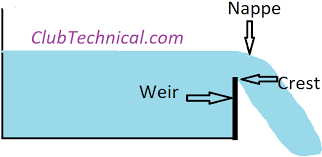chlorination and its methods
Chlorination
Chlorination involves adding a measured amount of chlorine to water to produce a
residual sufficient to kill bacteria, viruses, and cysts.
The killing effect of chlorine depends on the
pH of the water, temperature, chlorine level.
Methods of
Chlorination
The various methods of chlorination in water
treatment are:
Plain
Chlorination:
The treatment of water with only chlorine is
known as plan chlorination.
It is
free from suspended matter and without any prior treatment.
It is typically employed when the water source
is already clear and requires no additional steps for sediment or particulate
removal.
The main objective of plain chlorination is to
disinfect the water, effectively neutralizing or deactivating any harmful
microorganisms present.
Pre-Chlorination:
Pre-chlorination is the process of introducing
chlorine to untreated raw water before any other treatment procedures take
place.
This method serves a dual purpose: first, it
aids in enhancing coagulation by oxidizing specific compounds, facilitating the
formation of larger, settleable flocs during subsequent coagulation and
flocculation processes. Second, pre-chlorination assists in eliminating taste,
odor, and color issues by oxidizing organic compounds responsible for these
characteristics.
Post-Chlorination:
Post-chlorination involves the addition of
chlorine to treated water after all other treatment stages, such as
coagulation, sedimentation, filtration, and initial disinfection, have been
completed.
Its primary role is to provide a final dose of
chlorine to maintain a residual disinfectant in the water throughout the
distribution system.
This ensures the destruction of any remaining
microorganisms and safeguards against potential contamination.
Post-chlorination typically requires a chlorine dosage in the range of 0.25-5.0
mg/liter to achieve a combined residual chlorine concentration of 0.1-0.2
mg/liter.
Double or
Multiple Chlorinations:
Double or multiple chlorinations involve both
pre-chlorination and post-chlorination processes.
This approach is typically employed when the
raw water source is heavily contaminated and contains a significant
concentration of bacterial life.
By utilizing both pre-chlorination to address
initial contamination and post-chlorination for residual disinfection, this
method effectively ensures the comprehensive treatment of highly polluted water
sources.
Break Point
Chlorination:
Break Point chlorination is a technique used to
determine the optimal amount of chlorine required to achieve the desired level
of residual chlorine in water.
By identifying the breakpoint, this method
helps water treatment facilities ascertain the precise quantity of chlorine
necessary to ensure effective disinfection while preventing excessive chlorine
use, which can lead to undesirable disinfection by-products.
Super
Chlorination:
Super chlorination involves the deliberate
addition of chlorine to water beyond the breakpoint stage, often implemented at
the conclusion of the filtration process. This approach is typically adopted in
response to the outbreak of waterborne diseases or when there is a need for a
heightened level of disinfection.
However, it is essential to note that after
super chlorination, it becomes imperative to remove excess chlorine using an
appropriate de chlorination method before the treated water is supplied to
consumers.
This precaution helps prevent any potential
adverse effects associated with elevated chlorine levels in the drinking water.
Advantages
and disadvantages of chlorination of water
Advantages of
Chlorination of Water
Kills harmful and pathogenic microorganisms.
Prevents waterborne diseases.
Maintains water quality during distribution.
Provides residual protection.
Cost-effective water treatment method.
Disadvantages
of Chlorination of Water
Unpleasant taste and odour.
Formation of potentially harmful disinfection
byproducts.
Allergic reactions in some individuals.
Corrosive to certain materials and equipment.
Limited effectiveness against some parasites
and viruses.





Comments
Post a Comment